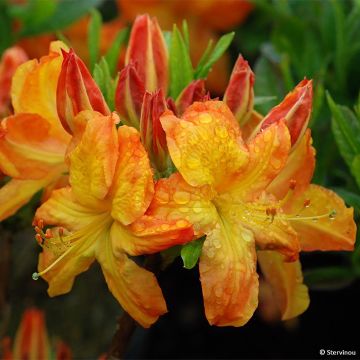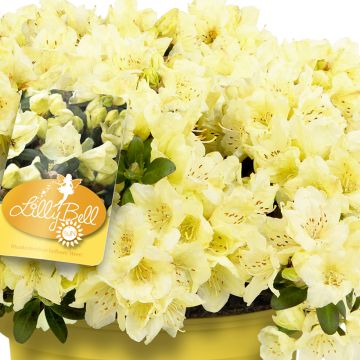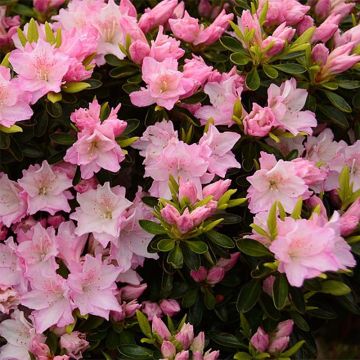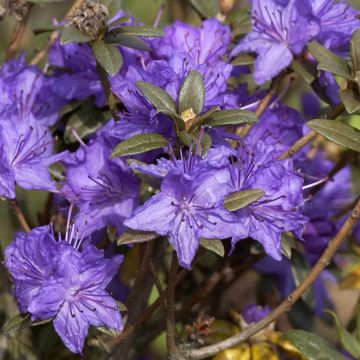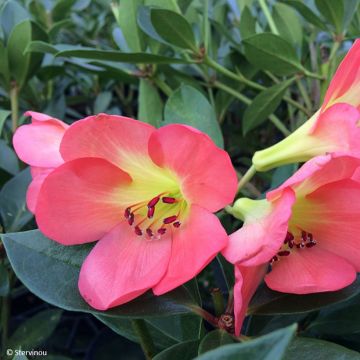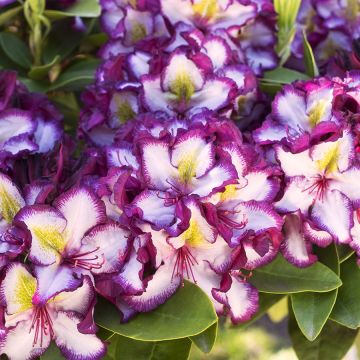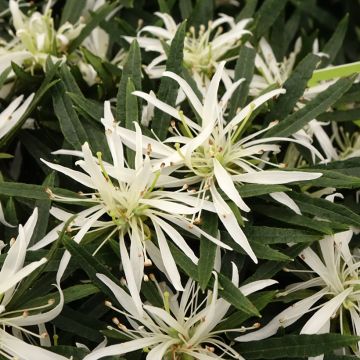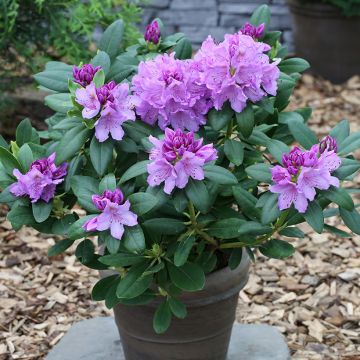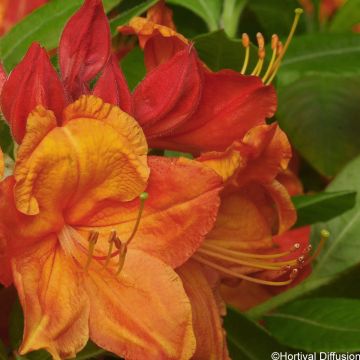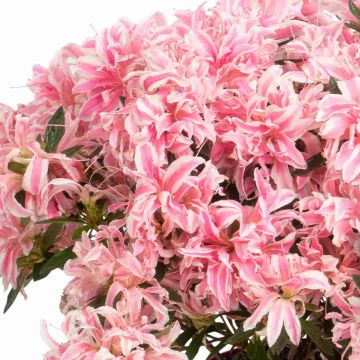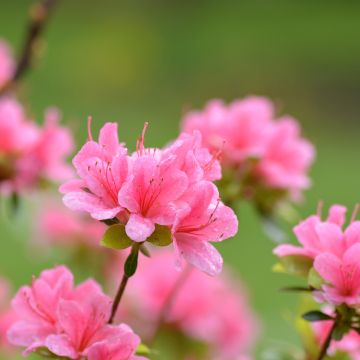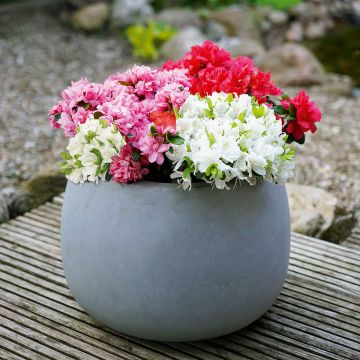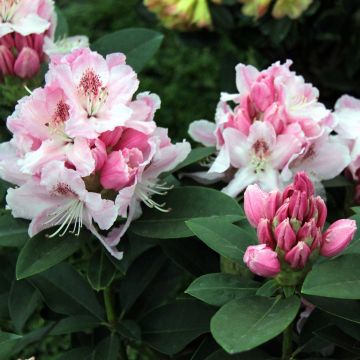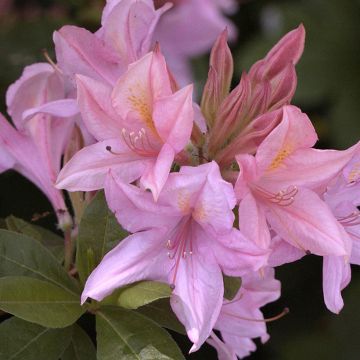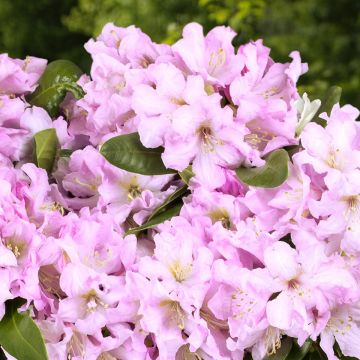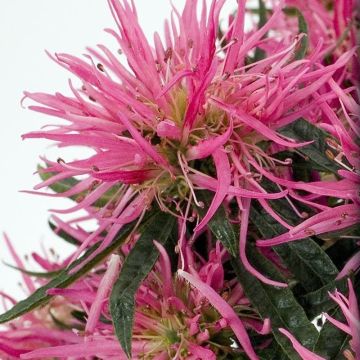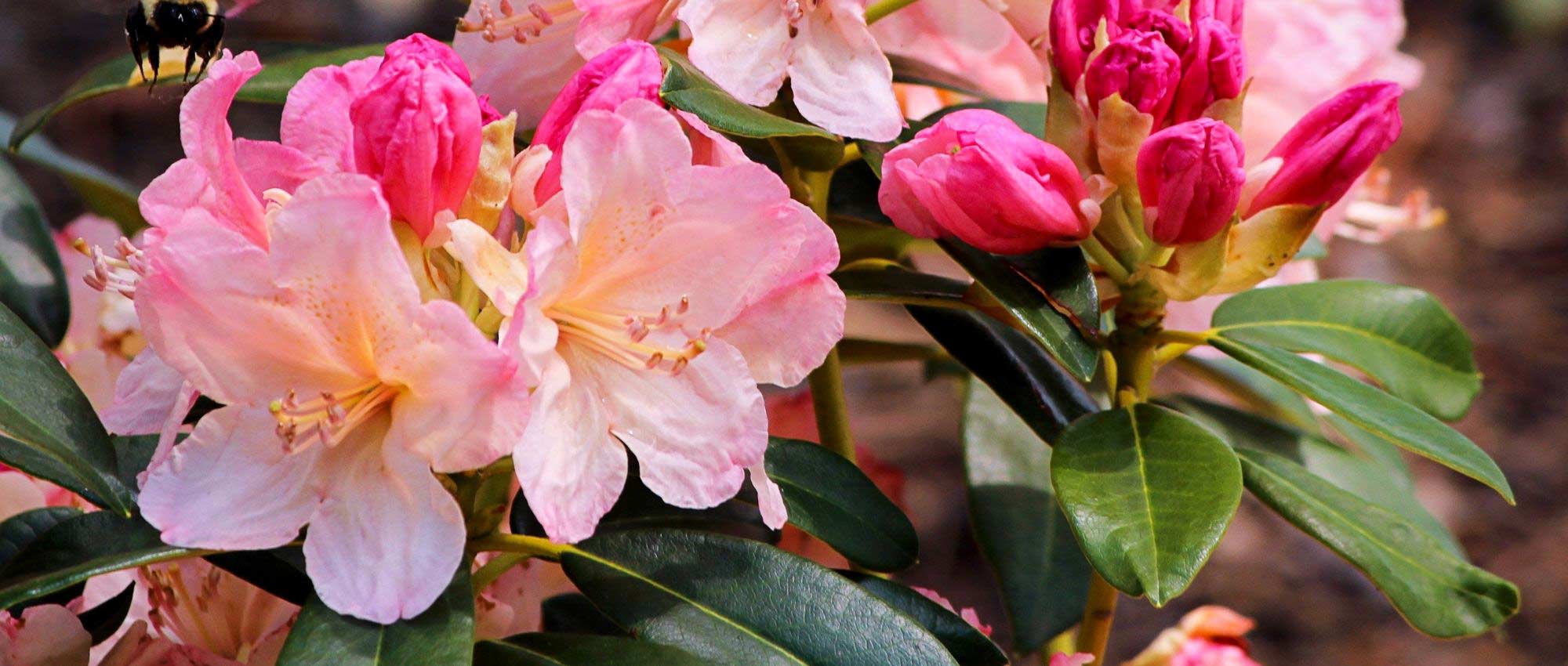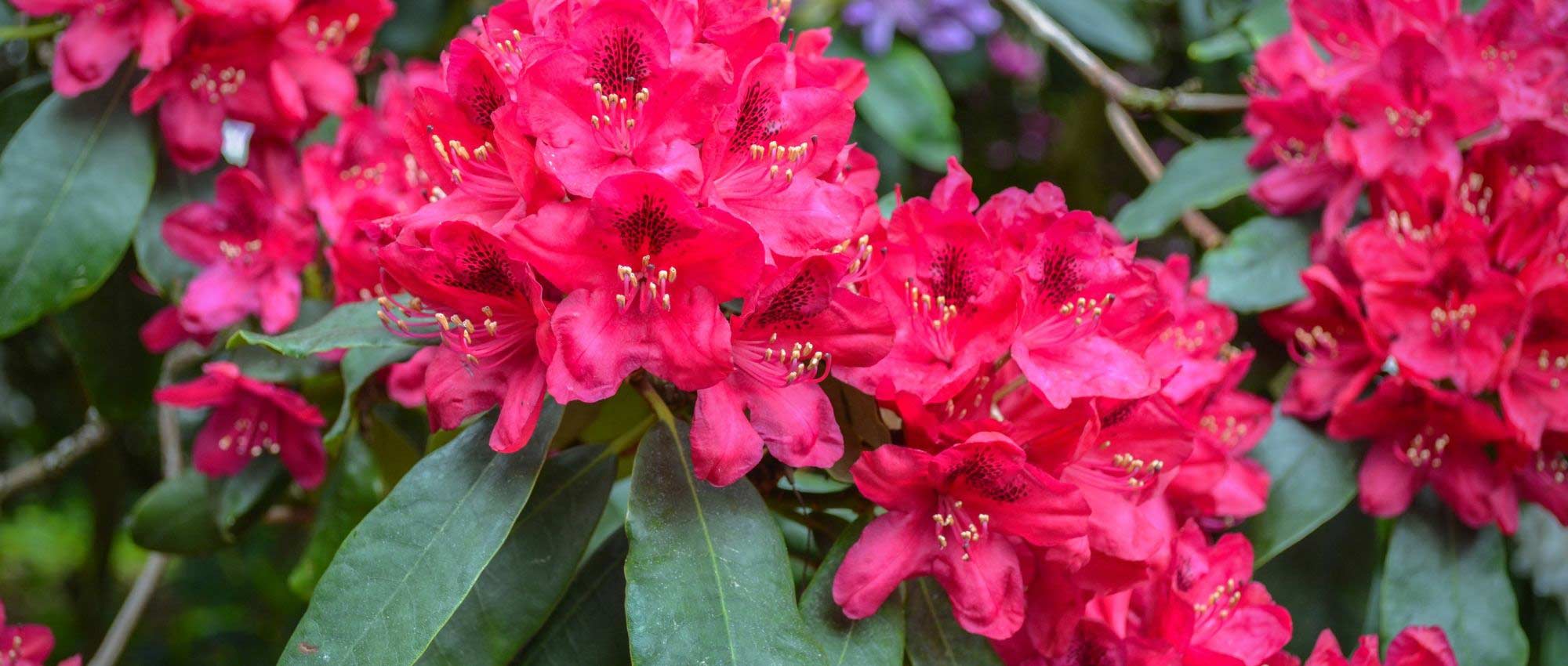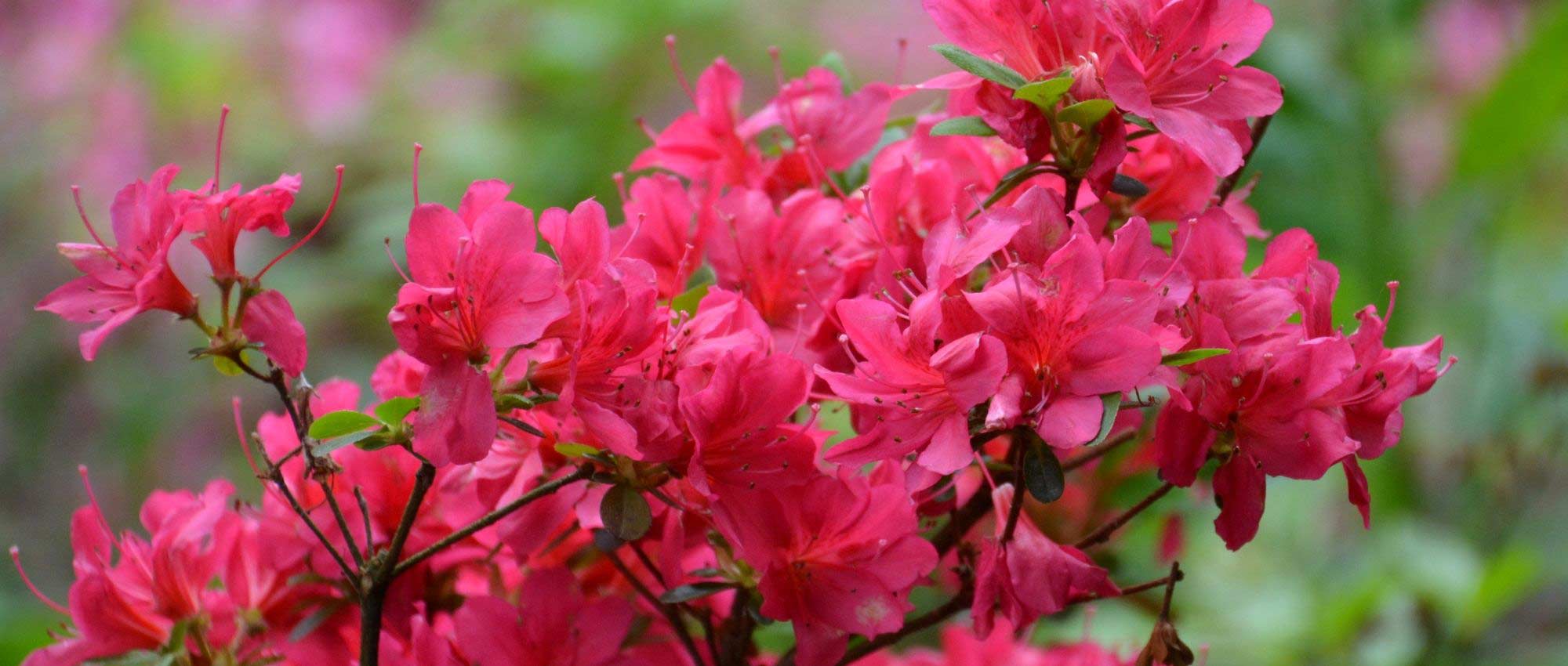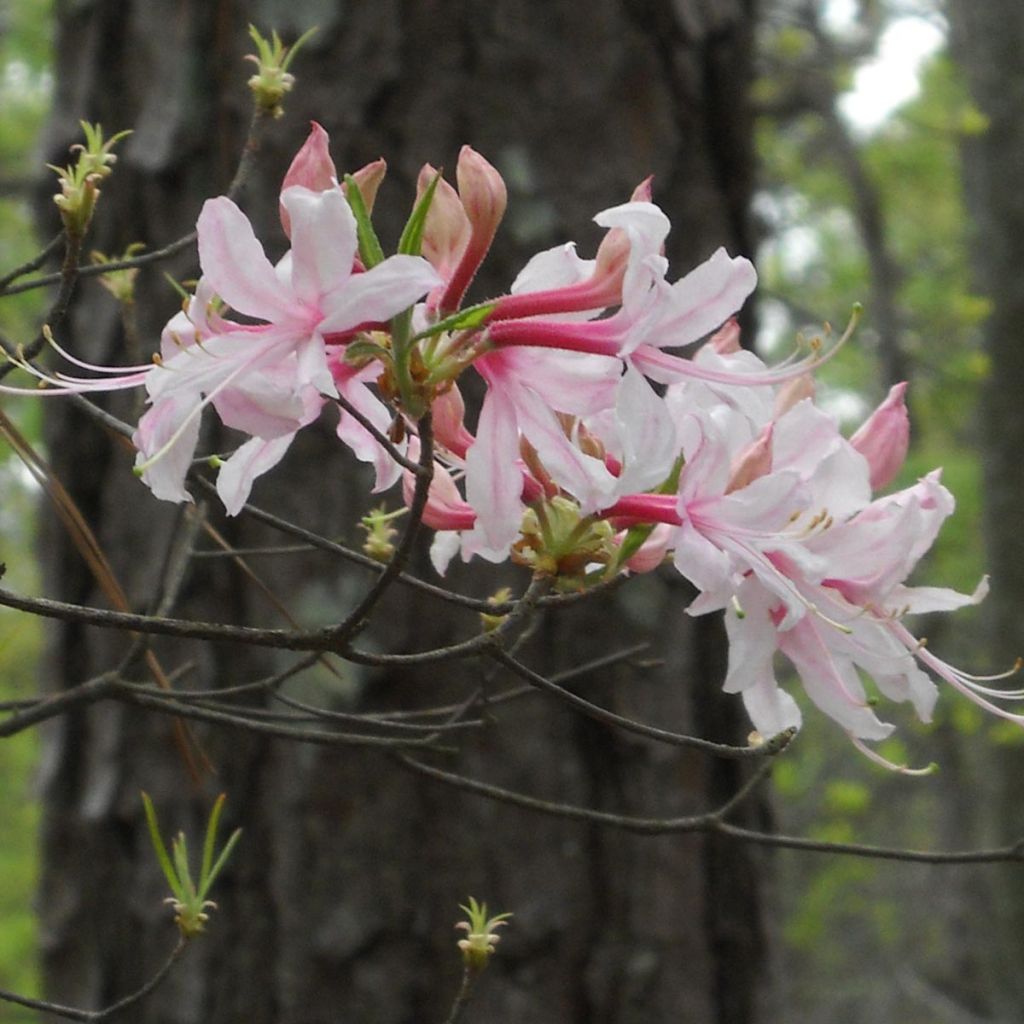

Rhododendron canescens - Mountain Azalea
Rhododendron canescens - Mountain Azalea
Rhododendron (Azalea) canescens
Mountain Azalea
Beautiful plant, tall with plenty of leaves. Well received at the time I had requested. Will be planted on Monday during the waning moon, which is auspicious for plantings. Thank you for the packaging. See you soon.
Marie-Rose, 10/10/2020
Special offer!
Receive a €20 voucher for any order over €90 (excluding delivery costs, credit notes, and plastic-free options)!
1- Add your favorite plants to your cart.
2- Once you have reached €90, confirm your order (you can even choose the delivery date!).
3- As soon as your order is shipped, you will receive an email containing your voucher code, valid for 3 months (90 days).
Your voucher is unique and can only be used once, for any order with a minimum value of €20, excluding delivery costs.
Can be combined with other current offers, non-divisible and non-refundable.
Why not try an alternative variety in stock?
View all →This plant carries a 24 months recovery warranty
More information
We guarantee the quality of our plants for a full growing cycle, and will replace at our expense any plant that fails to recover under normal climatic and planting conditions.

Would this plant suit my garden?
Set up your Plantfit profile →
Description
The Canescens Azalea, or Rhododendron canescens, is a botanical species native to the southeastern United States. It forms a dense and bushy bush that is adorned with numerous small flowers resembling those of honeysuckle in early spring. They are pale pink and their fragrance is delightfully musky. The dark deciduous foliage develops at the end of flowering and takes on lovely autumn colours. This bush of heathland soil tolerates cold and heat, in partial shade or dappled sunlight.
The genus Rhododendron belongs to the family Ericaceae. The canescens species is found in nature growing in large colonies in damp woods, on the edges of marshes, and along streams in North Carolina, western Florida, Tennessee, Arkansas, and Texas.
It is a perfectly hardy bush with slow growth and a bushy habit that can reach 13m (42ft) in height in its natural environment, but does not exceed 1.50 to 2m (6 to 7ft) in heightunder our climate. In April-May, as the leaves begin to emerge, the flowers bloom in clusters of 5 to 9 in short racemes. They are pale pink (rarely white) and form a funnel-shaped corolla that is 3 to 4cm (1.6in) long. A very pleasant musky fragrance can be detected nearby. The pistil and stamens of each flower extend well beyond the corolla and gracefully arch upwards. The leaves are thick, elliptical, and measure 5 to 7cm (2.8in) in length. Dark green on the upper surface, they are grey and pubescent on the underside. The flowering gives way to woody capsules that are 1 to 1.5cm (0.6in) long and filled with seeds. The Canescens Azalea tends to form large colonies through spontaneous sowing in its natural environment. Its root system is shallow and forms a vascular bundle that is quite fragile.
Rhododendron canescens is used in heathland beds, in cool understorey, associated with other azaleas and rhododendrons, as well as Japanese maples, Pieris, and camellias, for example. The early and magnificent flowering of this bush are its main assets, so showcase it according to your desires in a Japanese-inspired atmosphere or in a pot on the terrace.
Rhododendron canescens - Mountain Azalea in pictures




Plant habit
Flowering
Foliage
Botanical data
Rhododendron (Azalea)
canescens
Ericaceae
Mountain Azalea
North America
Other Rhododendron and Azalea A to Z
View all →Planting and care
Azaleas prefer acidic, humus-rich soils that retain moisture even in summer. However, it requires well-drained soil as stagnant moisture in winter can be fatal to its fragile root system, which needs aerated soil to function normally. This bush will thrive better in partial shade or dappled sunlight. Before planting this rhododendron in ordinary soil, it is necessary to acidify the soil with turf, an operation that may need to be repeated. Install it in a sheltered location away from strong winds, even though it is hardy down to -20°C. Poor drainage almost inevitably leads to root rot, so in heavy soil, it is preferable to elevate the planting. To do this, there is a technique commonly practiced in Anglo-Saxon countries: the operation consists of installing blocks of turf in a staggered pattern, one on top of the other, slightly inclined inward, as if they were bricks, creating a raised terrace. Moisten the blocks before planting the bushes in individual holes dug in the turf.
The shallow root system of this plant cannot tolerate any competition, so no planting should be done at its base. Install an acidifying mulch (wood chips, bark, or pine needles) around its base, which will help maintain soil moisture and temperature. The roots should never dry out: water abundantly during dry periods, at least once a week in the first year. This rhododendron slowly naturalizes through suckers, without being invasive.
It is best not to prune this type of bush, but if necessary to limit its size, prune it in April-May after the early spring flowering, during the growing season: remove up to a quarter of the length of the branches.
Planting period
Intended location
Care
Planting & care advice
-
, onOrder confirmed
Reply from on Promesse de fleurs
Haven't found what you were looking for?
Hardiness is the lowest winter temperature a plant can endure without suffering serious damage or even dying. However, hardiness is affected by location (a sheltered area, such as a patio), protection (winter cover) and soil type (hardiness is improved by well-drained soil).

Photo Sharing Terms & Conditions
In order to encourage gardeners to interact and share their experiences, Promesse de fleurs offers various media enabling content to be uploaded onto its Site - in particular via the ‘Photo sharing’ module.
The User agrees to refrain from:
- Posting any content that is illegal, prejudicial, insulting, racist, inciteful to hatred, revisionist, contrary to public decency, that infringes on privacy or on the privacy rights of third parties, in particular the publicity rights of persons and goods, intellectual property rights, or the right to privacy.
- Submitting content on behalf of a third party;
- Impersonate the identity of a third party and/or publish any personal information about a third party;
In general, the User undertakes to refrain from any unethical behaviour.
All Content (in particular text, comments, files, images, photos, videos, creative works, etc.), which may be subject to property or intellectual property rights, image or other private rights, shall remain the property of the User, subject to the limited rights granted by the terms of the licence granted by Promesse de fleurs as stated below. Users are at liberty to publish or not to publish such Content on the Site, notably via the ‘Photo Sharing’ facility, and accept that this Content shall be made public and freely accessible, notably on the Internet.
Users further acknowledge, undertake to have ,and guarantee that they hold all necessary rights and permissions to publish such material on the Site, in particular with regard to the legislation in force pertaining to any privacy, property, intellectual property, image, or contractual rights, or rights of any other nature. By publishing such Content on the Site, Users acknowledge accepting full liability as publishers of the Content within the meaning of the law, and grant Promesse de fleurs, free of charge, an inclusive, worldwide licence for the said Content for the entire duration of its publication, including all reproduction, representation, up/downloading, displaying, performing, transmission, and storage rights.
Users also grant permission for their name to be linked to the Content and accept that this link may not always be made available.
By engaging in posting material, Users consent to their Content becoming automatically accessible on the Internet, in particular on other sites and/or blogs and/or web pages of the Promesse de fleurs site, including in particular social pages and the Promesse de fleurs catalogue.
Users may secure the removal of entrusted content free of charge by issuing a simple request via our contact form.
The flowering period indicated on our website applies to countries and regions located in USDA zone 8 (France, the United Kingdom, Ireland, the Netherlands, etc.)
It will vary according to where you live:
- In zones 9 to 10 (Italy, Spain, Greece, etc.), flowering will occur about 2 to 4 weeks earlier.
- In zones 6 to 7 (Germany, Poland, Slovenia, and lower mountainous regions), flowering will be delayed by 2 to 3 weeks.
- In zone 5 (Central Europe, Scandinavia), blooming will be delayed by 3 to 5 weeks.
In temperate climates, pruning of spring-flowering shrubs (forsythia, spireas, etc.) should be done just after flowering.
Pruning of summer-flowering shrubs (Indian Lilac, Perovskia, etc.) can be done in winter or spring.
In cold regions as well as with frost-sensitive plants, avoid pruning too early when severe frosts may still occur.
The planting period indicated on our website applies to countries and regions located in USDA zone 8 (France, United Kingdom, Ireland, Netherlands).
It will vary according to where you live:
- In Mediterranean zones (Marseille, Madrid, Milan, etc.), autumn and winter are the best planting periods.
- In continental zones (Strasbourg, Munich, Vienna, etc.), delay planting by 2 to 3 weeks in spring and bring it forward by 2 to 4 weeks in autumn.
- In mountainous regions (the Alps, Pyrenees, Carpathians, etc.), it is best to plant in late spring (May-June) or late summer (August-September).
The harvesting period indicated on our website applies to countries and regions in USDA zone 8 (France, England, Ireland, the Netherlands).
In colder areas (Scandinavia, Poland, Austria...) fruit and vegetable harvests are likely to be delayed by 3-4 weeks.
In warmer areas (Italy, Spain, Greece, etc.), harvesting will probably take place earlier, depending on weather conditions.
The sowing periods indicated on our website apply to countries and regions within USDA Zone 8 (France, UK, Ireland, Netherlands).
In colder areas (Scandinavia, Poland, Austria...), delay any outdoor sowing by 3-4 weeks, or sow under glass.
In warmer climes (Italy, Spain, Greece, etc.), bring outdoor sowing forward by a few weeks.






























